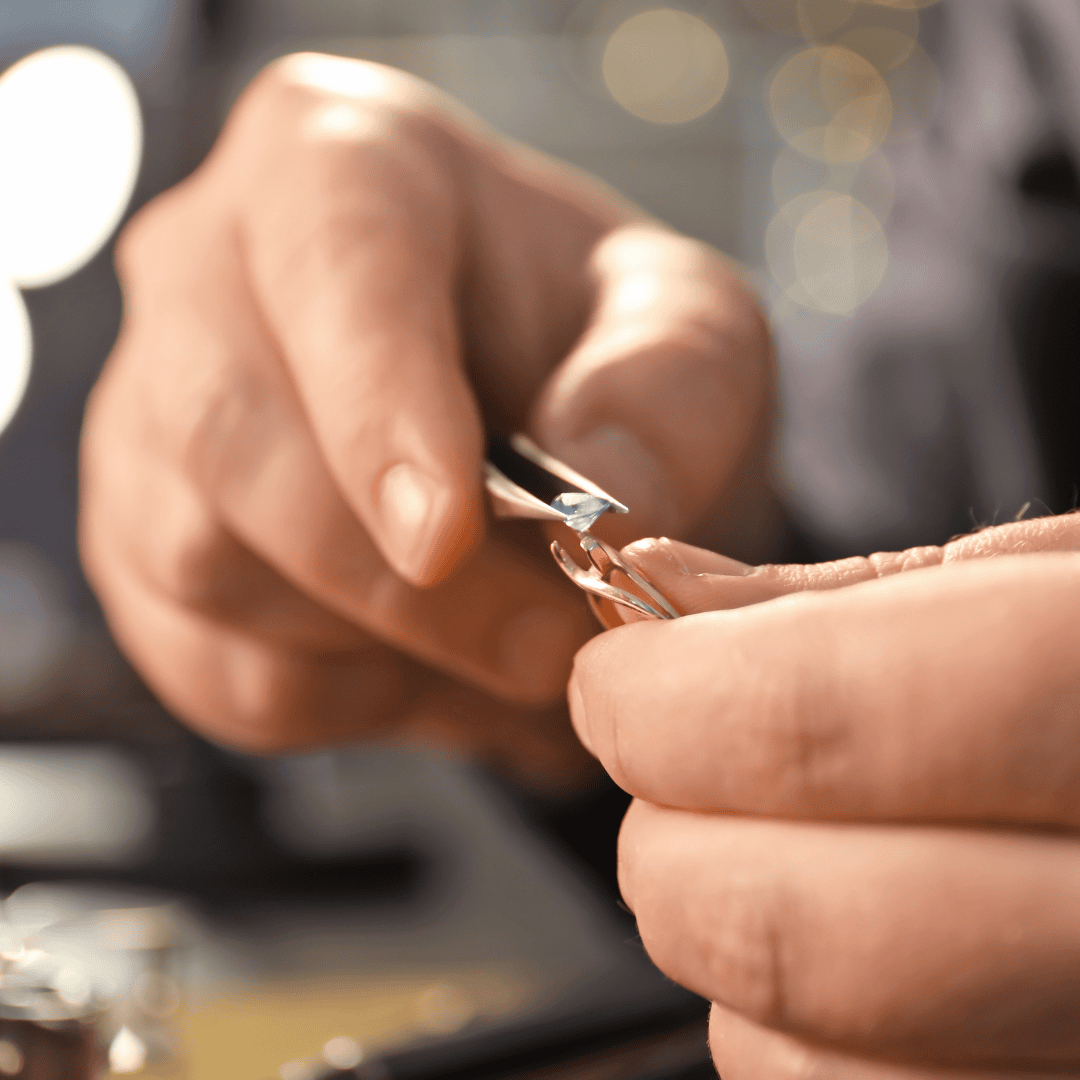Starting a jewellery repair service could be a lucrative and fulfilling venture. The jewellery industry is a thriving market, and there is always a demand for skilled artisans who can restore and revitalise cherished pieces. In this blog, we’ll guide you through the essential steps to launch and grow your own jewellery repair service.
Acquire the Necessary Skills and Knowledge
Before diving into the business, it’s crucial to have a strong foundation in jewellery repair. Consider enrolling in formal training programmes or apprenticeships to hone your skills if you were wanting to do the service yourself. Understanding various metals, gemstones, and jewellery designs will be essential in providing high-quality repair services.
Doing research and bringing in experienced or newly graduated goldsmiths/silversmiths to do bespoke designs/remodelling as well as repairs is a good way to make the business commercially worthwhile as well.
Obtain the Right Tools and Equipment
Invest in high-quality tools and equipment specific to jewellery repair. This may include precision tools for intricate work, polishing machines, and gemstone setting tools. Ensuring you have the right equipment from the outset will set the stage for delivering professional services. Tool suppliers such as HS Walsh can provide and help through the process.
Legal and Regulatory Compliance
Research the legal and regulatory requirements for operating a jewellery repair service in your area. This may involve obtaining business licences, permits, and understanding industry-specific regulations. Compliance with jewellery industry standards and ethics is essential for building trust with customers.
Establish Your Brand and Services
Consider whether you’ll focus on specific types of repairs, such as antique jewellery restoration, custom design alterations, or general maintenance.
Here are the top 5 most common jewellery repairs a customer could come in with and what to look out for:
1. Resizing Rings: One of the most common jewellery repairs is resizing rings. Whether it’s due to weight fluctuation or inheriting a family heirloom, getting the perfect fit is essential for comfort and wearability. If a customer comes in for advice if their ring needs resizing look for tightness, twisting, or slipping to determine if the ring needs resizing.
2. Clasp Replacement: Over time, the clasps on necklaces and bracelets can weaken, leading to potential loss or damage. Keep an eye on the integrity of the clasps, and if they show signs of wear or struggle to fasten securely, it may be time for a replacement.
3. Stone Replacement: Gemstones can become loose or chipped with regular wear. Inspect jewellery periodically for any movement or damage to the stones if a customer brings in a piece with a loose gemstone query.
4. Chain Repair: Chains are prone to kinking, stretching, or breaking, especially with daily wear. Check for signs of weakness or damage, such as thinning links or visible stress points and if any of this is happening then you should address the issues promptly as this can prevent more extensive repairs in the future.
5. Cleaning and Polishing: While not a repair in the traditional sense, regular cleaning and polishing are vital for maintaining the lustre and shine of your jewellery. A customer could bring in a piece that is tarnished, dull or has scratches and they would like professional cleaning to restore to its original brilliance. Proactive maintenance and periodic inspections are key to preventing more extensive damage or loss.
Many CMJ members have jewellery repair services, including Gold Arts.
“One of our USP’s is that we have a workshop on site at each location, this enables customers to feel secure in the knowledge that their jewellery is kept safe onsite at all times and if they wish they’re able to meet and speak to the Goldsmith who’ll be doing the work they require giving it that personal touch for the bigger more intricate jobs.” Doug Newman, Jnr from Gold Arts.





